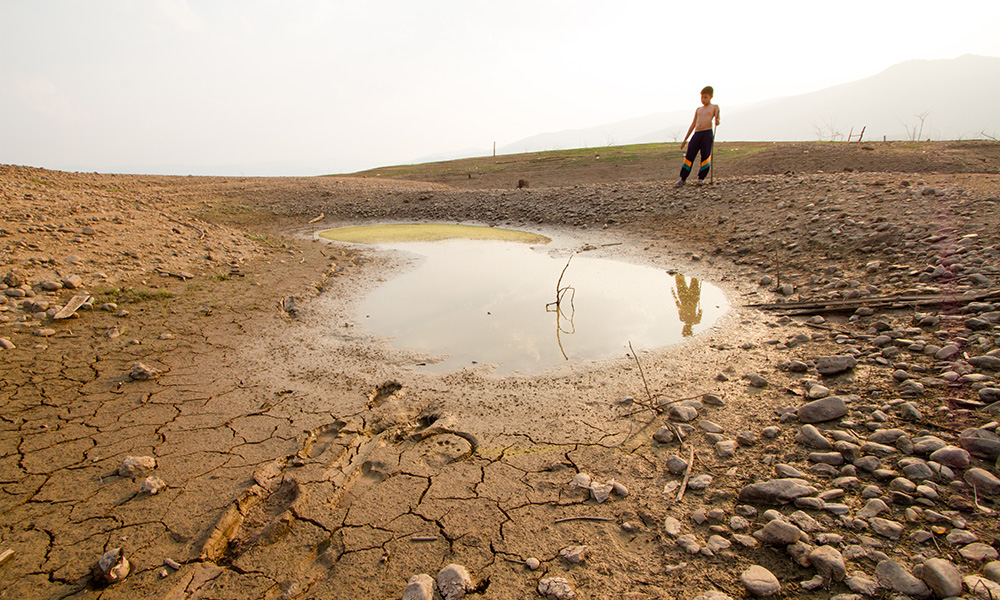The European Commission’s Joint Research Centre estimated there’s a 75–90% chance of wars being fought over water within the next century. For the uninitiated and those without first-hand experience with water scarcity, this projection may come off as alarmist or far-fetched. However, for many in remote areas in Northern Africa, conflicts due to water are a reality that is growing in severity each passing year.
With the world’s population set to grow to 8.5bn by 2030, and demand for water set to overtake supply by 40% as a result, the water wars are seemingly not far away. This situation warrants reassessment of our existing water infrastructure and exploration of solutions that can potentially alleviate scarcity.
In the MENA region, water scarcity requires multidimensional assessment. Due to the arid climate, limited groundwater resources, and scanty rainfall, the region faces acute scarcity. Concurrently, however, just over a year ago, the region experienced one of its most devastating flood spells as Egypt, Jordan, Lebanon, and Sudan witnessed a considerable loss of lives and livelihoods. So, the natural line of thought here is why excessive rainfall is not mitigating water scarcity; if rainwater harvesting is a plausible solution under the circumstance. The answer is yes and no. Yes, because harvesting is a potential solution; no, because conventional harvesting is not.
Why is centralised harvesting not feasible?
When we talk about MENA, we must first factor in its geopolitical and socioeconomic status quo. According to the World Bank, the Extreme Poverty Rate in MENA nearly doubled between 2015 and 2018. While the ongoing conflict in Syria and Yemen is among the primary reasons, there are many systemic causal factors in individual nations. Although there is no data since the outbreak of the pandemic, World Bank representatives are of the opinion that the global crisis has only aggravated the situation. This status quo incapacitates local governments from exploring and implementing conventional, centralised rainwater harvesting systems, which can cost up to $2,000 per household. In this region, water scarcity is rather severe in rural areas and more so in terms of lack of clean, potable water.

Typically, centralised harvesting systems are established in an area and the harvested water is transported to the point of use. So, even if such a system were to be set up by the government, it will require extensive piping for equitable water distribution — again, entailing more costs. Moreover, its efficiency will hinge largely on the amount of rainfall in the central catchment area; erratic and scanty rainfall can lead to a loss of efficiency.
Initial investments aside, centralised harvesting systems also entail periodic maintenance costs. Typically, the harvested water is subjected to chemical- or electricity-based treatment for freshness and decontamination. This process takes precedence because stored water is susceptible to contamination, the impact of which can be devastating. So, it is safe to say that, at least within the MENA context, centralised rainwater harvesting systems do not tick all — social, economic and environmental — the boxes of sustainability. This challenge can be addressed however by decentralised rainwater harvesting systems.
The feasibility of decentralised harvesting systems
As the name suggests, decentralised systems are not constrained to a specific location; they can be implemented anywhere with ease. They are often built using porous building materials — available in the form of bricks, kerbstones, and tiles — which are paved on rain-exposed surfaces like roads, barren lands, etc. During rains, these products absorb and store the water inside reservoirs and, thanks to the air-permeable nature of the surface, the stored water can remain fresh for up to seven years, without requiring external, chemical- or electricity-based treatment.
As far as feasibility and holistic sustainability are concerned, such systems promise the following: the primary material is sand, which is sourced through environmentally responsible processes. Due to the widespread availability of desert sand, porous products are inexpensive and affordable for people across the socioeconomic spectrum. Decentralised systems are also deployable at custom sizes, by individuals and institutional adopters alike, as per requirements, and the adopter has full ownership of the harvested water. Since rainwater is the purest form of natural water, it can be used for a variety of purposes — all for a one-time, low-capital investment.
These characteristics bear the promise of sustainable water security at the grassroots and accompanying socio-economic empowerment. In urban centres, decentralized systems can be implemented to keep public areas like roads, parking lots, and playgrounds free of flooding and waterlogging while harvesting potable water. In cities like Dubai, where flooding has previously resulted in property damage and associated repair costs, the impact can be profound.
Furthermore, decentralised harvesting systems can be integrated to create smart city water networks or ‘Sponge Cities’. If implemented in design stages with effective piping and redirection mechanisms, decentralised harvesting systems can embed circularity in urban centres and supply low-impact potable water. They can, in turn, reduce the dependency on carbon- and energy-intensive desalination plants, which currently account for three-quarters of water production in the Middle East. This is to say, decentralised systems can be a viable solution at the intersection of water security and net zero pursuits.
Read more:

